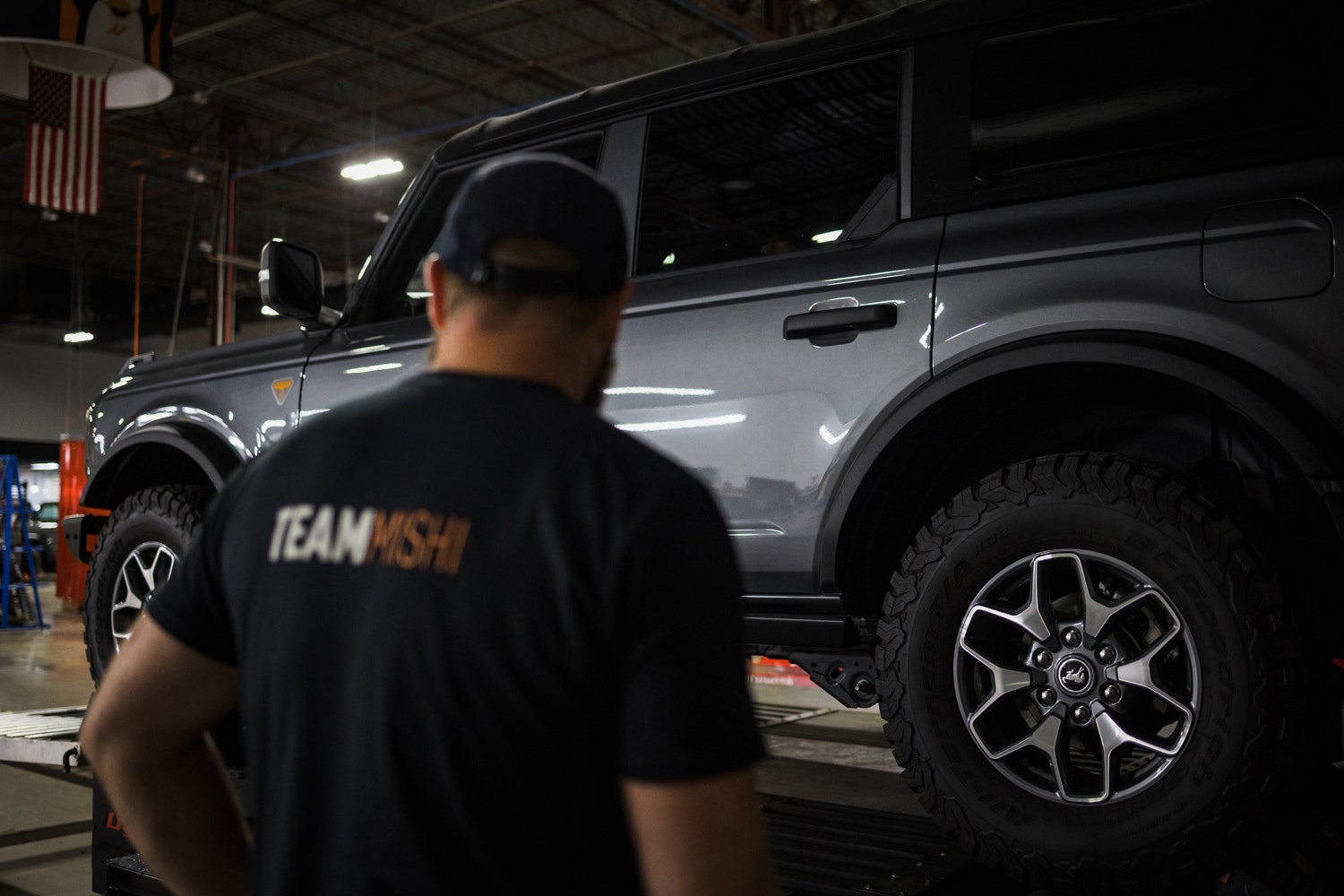
Low Road - 2021+ Ford Bronco 2.3L/2.7L Performance Stock Location Intercooler R&D, Part 5 - 2.7L Dyno Results
For any community, the wants and needs of the enthusiast essentially boil down to style and speed. These Broncos already roll off the assembly line looking the part, but, let's face it, we all want that extra grunt under the hood, no matter the reason. These Off-roaders weren't exactly designed for speed, but some extra ponies added to the pack only make the Bronco more capable when the trail gets treacherous. One of the best stepping stones on the quest for additional power out of your rig comes from an intercooler upgrade. While the 2.7L powered Broncos are packing more of a punch than their four-cylinder 2.3L counterpart, they both share this same key to that sequestered power potential, and now we'll see what the 2.7L has hidden away.

To unveil the 2.7L Bronco's hidden performance, we're putting our Badlands through the same tests we subjected our 2.3L, aka Pedro, up against, starting with the flow bench. Since the flow rating of these designs isn't dependent on the engine, our flow results are the same as we covered in the last post. So make sure you head back to Pedro's bout on the DynaPacks to dive deeper into our flow results and testing. As we also covered in the previous post, we expect an increase in flow with the addition of performance charge pipes.

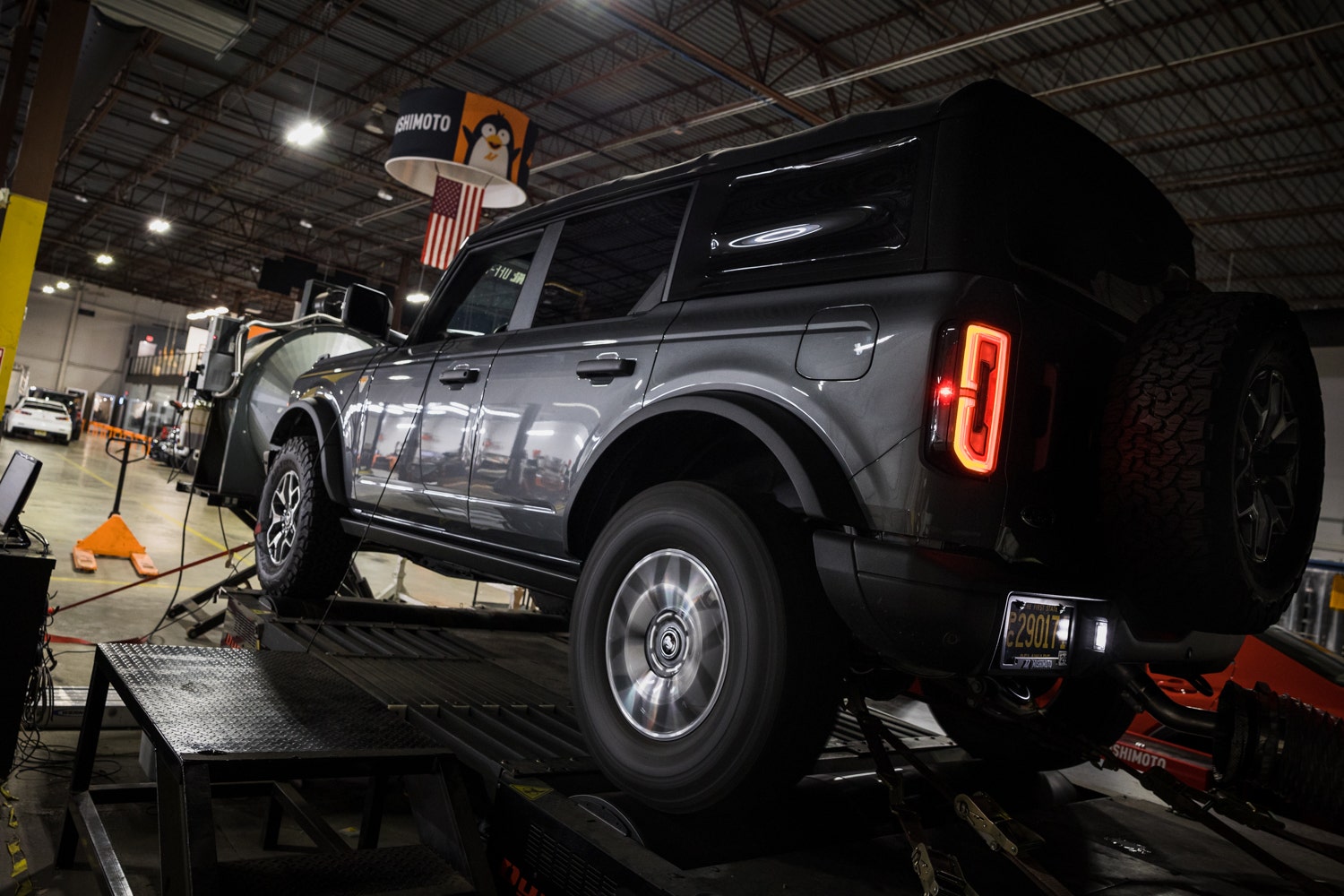
With the flow testing already sorted, we led our Bronco to the dyno area. We opted to head for our DynoJet for this round of testing for better cooperation with this Bronco's automatic transmission. Essentially, to record accurate temperature and power figures, the transmission needs to stay in a specific gear for the closest 1:1 power output ratio. Since these dynamometers operate differently, it can be tricky to force a TCU to stay in that gear during these pulls when using the DynaPacks, so the Jet was the best option for our 10-speed Bronco. To learn more about how our dynos work, make sure you head over to our tech post:
Mishimoto is Dyno-Mite - Our DynoJet and DynoPack Systems
Like the 2.3L, we started with singular power pulls to closely examine the effects of our intercooler's improvements across the power band, starting with this intercooler's primary purpose - cooling. Delivering cooler and denser air to the combustion chamber is critical to improving power output. We found that our larger core and increased fin density did just that. We noted that our intercooler dropped outlet temperatures by 15.8°F over the stock unit.
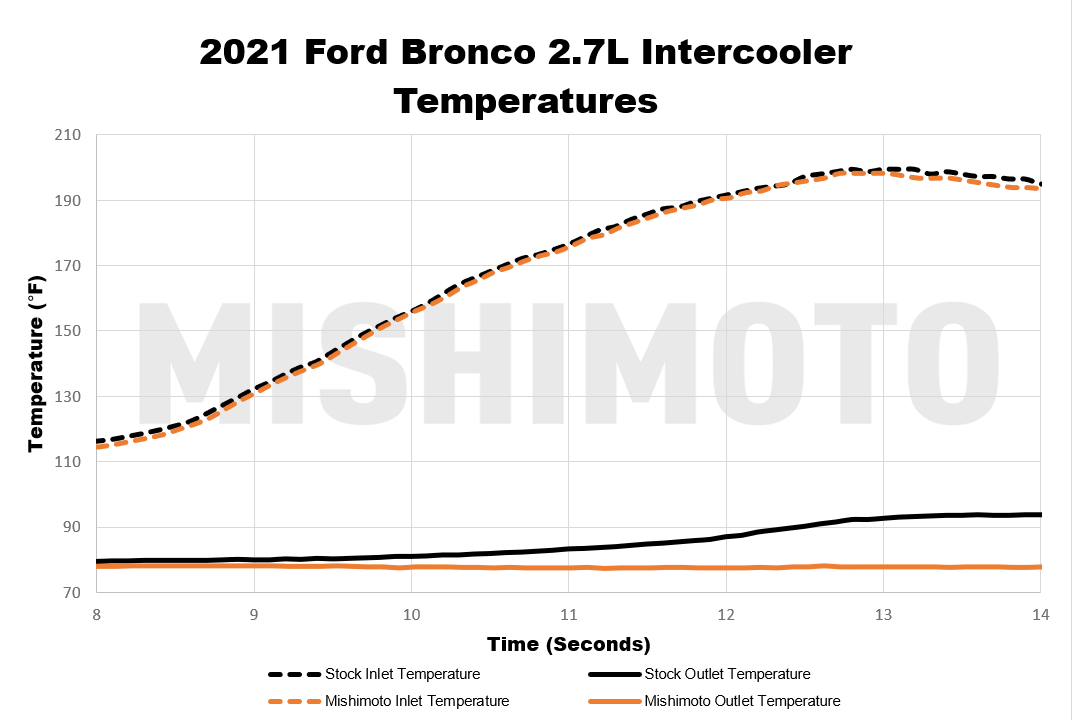
Pressure drop is inevitable with any system, but mitigating that loss is essential to any forced induction vehicle's peak performance. Larger intercooler core volumes with densely packed internal fins are typically the culprits of the missing pressure, but not in this case. During our testing, we recorded a maximum drop of only 1.8PSI in system pressure, only a 0.3PSI increase over the OEM unit.
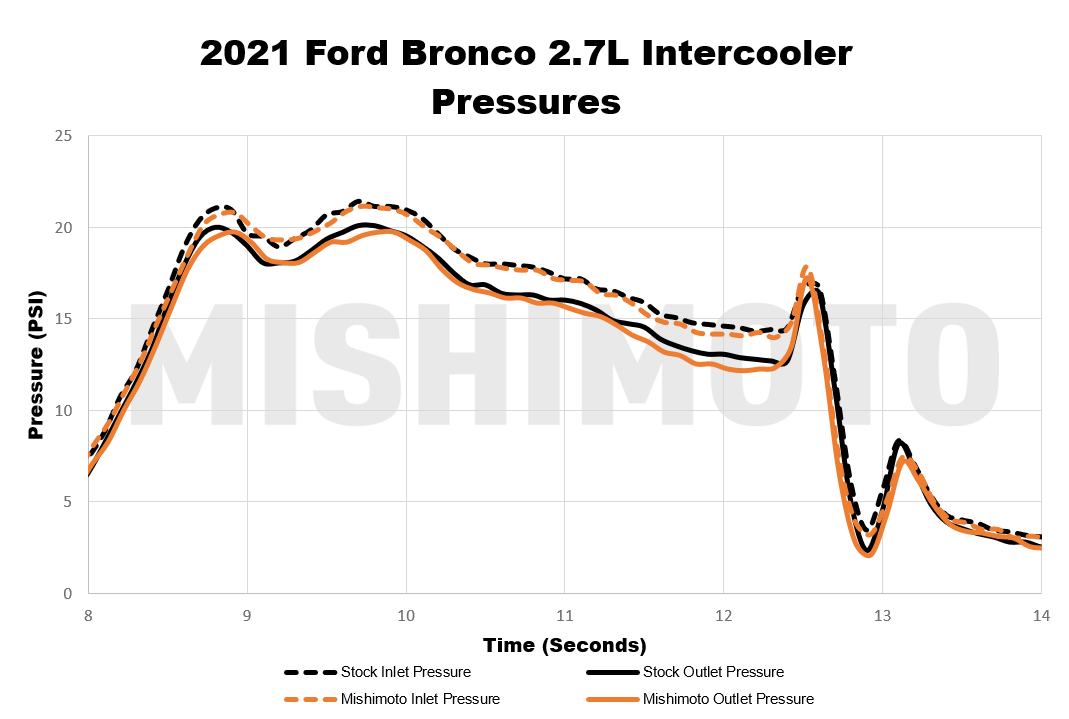
The fruits of our labors are, of course, extra power added to the 2.7L's output. While the primary purpose of upgrading the intercooler system is to keep up with performance tuning, improvements to the system often result in beneficial side effects in the form of additional horsepower and torque. Regarding our 2.7L Bronco, we recorded an additional 6.5 horsepower and torque with OEM tuning. We would expect to extract even more power from the 2.7L EcoBoost with the addition of a performance tune and larger charger pipes.
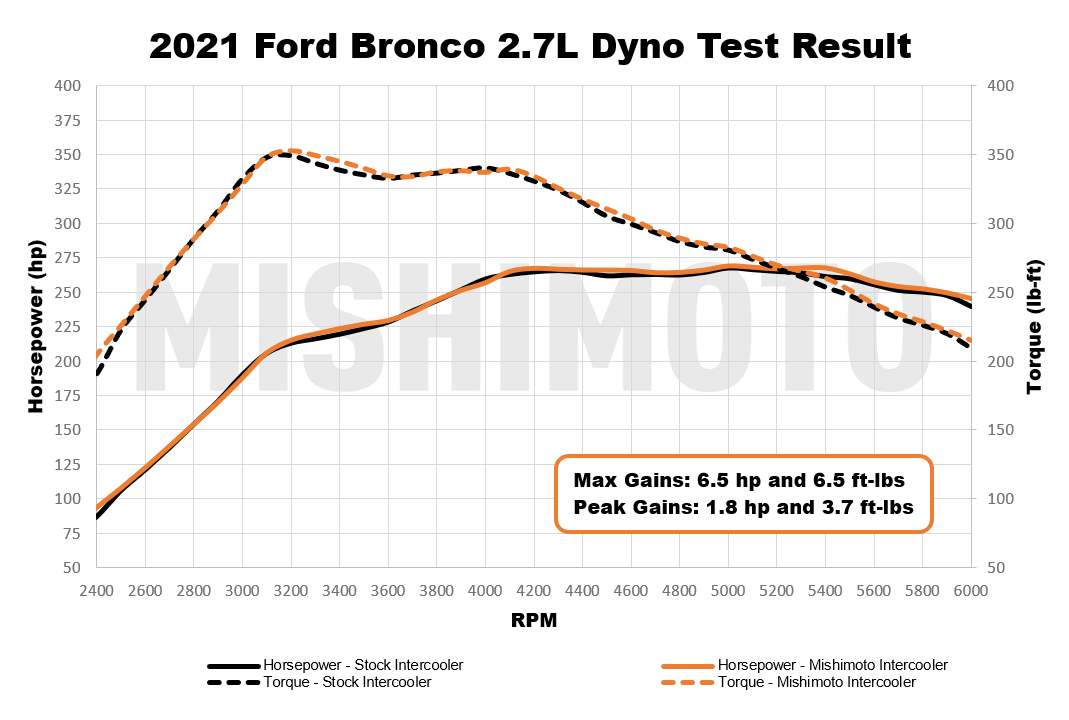
Even with our power, pressure, and temperature results finalized, we still have more to test. These results give us a snapshot of how the intercooler performs in one sweep of the powerband, which isn't how anyone drives. We needed to see how this intercooler operates under duress. Enter our heat soak test. Our engineering team devised this procedure to simulate the harshest driving conditions by removing the cool-down period between each run. We stacked six power pulls back-to-back to push as much heat through the system as possible for a true test of our improved design. Our intercooler maintained an average heat reduction of 15°F over the OEM unit through each increasingly heated run.
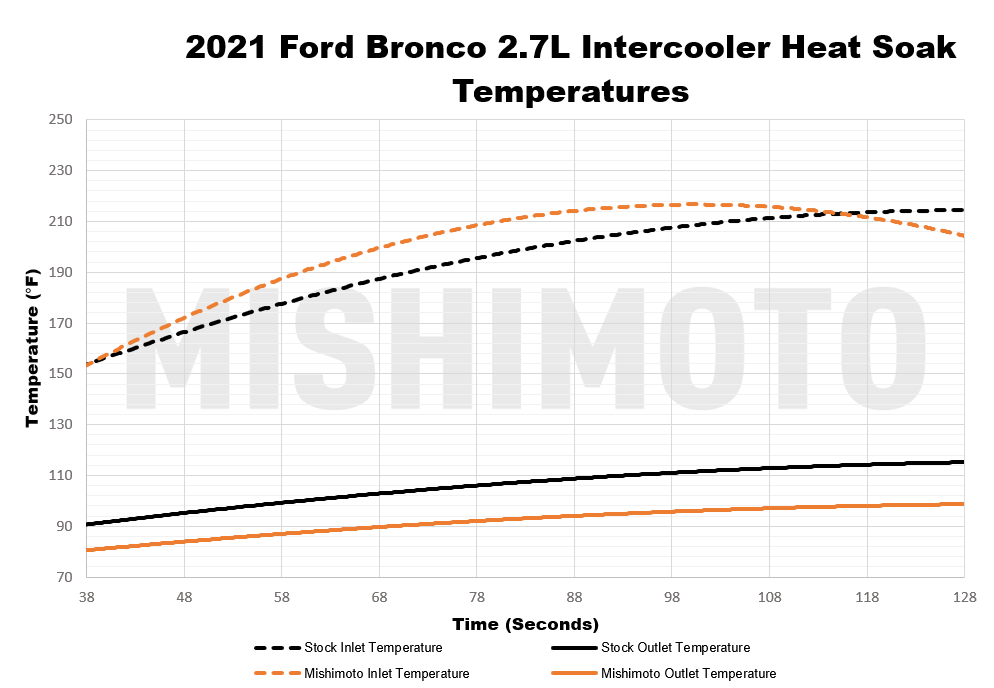
While the 2.7L EcoBoost is already packing a more than capable 330HP and 415TQ right off the factory floor, we enthusiasts still want more from this twin-turbo V6. Whether for clawing out of ravines, hauling more gear, or just hauling ass, every added ounce of power is greatly appreciated. So make sure you grab yours today:
Intercooler, Stock Location, fits 2021+ Ford Bronco 2.3L/2.7L
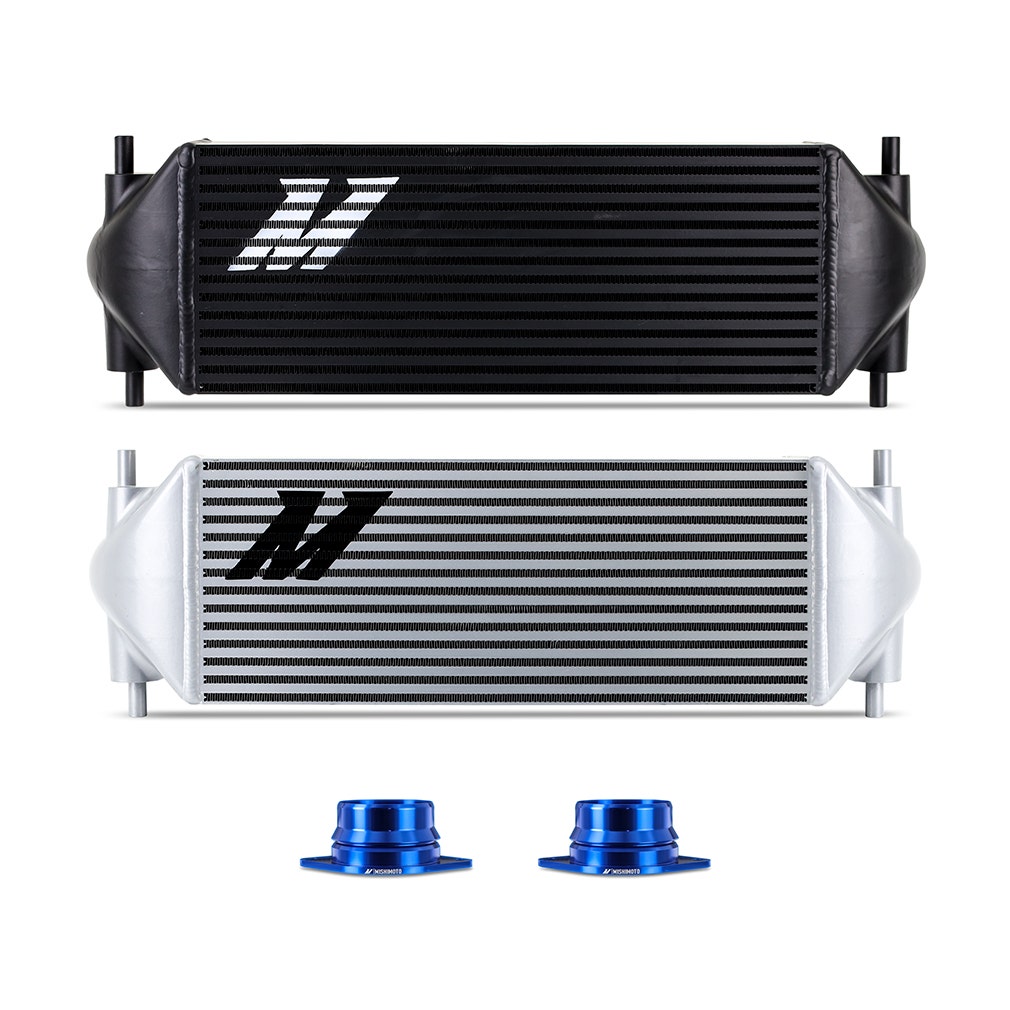
Thanks for Reading!
-Nick




